Are you curious about the different types of magnets and how they impact modern industries? Whether you’re an engineer, buyer, or technical professional, understanding the various magnet types is crucial for selecting the right material for your applications — from electronics and automotive to renewable energy and manufacturing.
In this guide, you’ll get a clear breakdown of permanent magnets, temporary magnets, and electromagnets, along with their most important properties, common uses, and what sets each apart. Plus, as a leading Chinese magnetic material supplier, NBAEM will show you how these magnet types align with current industrial demands and why choosing the right supplier matters.
Ready to explore the world of magnets and find the best fit for your next project? Let’s dive into the fundamental concepts and detailed types that define today’s magnetic technology.
Types of magnets Basic concepts
Definition and fundamental principles
We define a magnet as any object or material that produces a magnetic field — a region where magnetic forces act on other magnets and magnetic materials. At the atomic level magnetism comes from the spin and orbital motion of. In ferromagnetic materials groups of atoms form aligned regions called magnetic domains. When most domains point the same way the material shows a net magnetic field.
How magnetic fields are created
- Moving electric charges and electron spin create magnetic dipoles.
- permanent magnets, quantum interactions (exchange coupling) lock many atomic moments in the same direction.
- Field lines flow from the magnet’s north pole to its south pole; field strength is strongest near the poles- Electromagnets create fields by running current through coils; field strength depends on current, turns, and the core material.
Natural magnets versus manufactured magnets
- Natural magnets: magnetite (lodestone) is a naturally magnetized iron ore. It’s useful historically but limited in strength and consistency.
- Manufactured permanent magnets: engineered materials such as neodymium (NdFeB), samarium cobalt (SmCo), alnico, and ceramic ferrite offer predictable strength, form factors and temperature behavior.
- Temporary magnets and soft magnetic materials: soft iron and related alloys become magnetic under a field but lose magnetization when the field is removed — useful for switching and transformer cores.
- Electromagnets: fully controllable fields used where adjustable or high instantaneous force is required.
Key differences to note when exploring types of magnets
- Strength and consistency: engineered permanent magnets outperform naturalestone.
- Temperature and corrosion behavior: some alloys tolerate heat and corrosive environments better than others.
- Controllability: only electromagnets and temporary magnets allow on‑demand magnetization and demagnetization.
This basic overview sets the stage examining the different types of magnets, how they perform under load and temperature, and which materials match specific industrial and electronic applications.
Types of magnets Overview
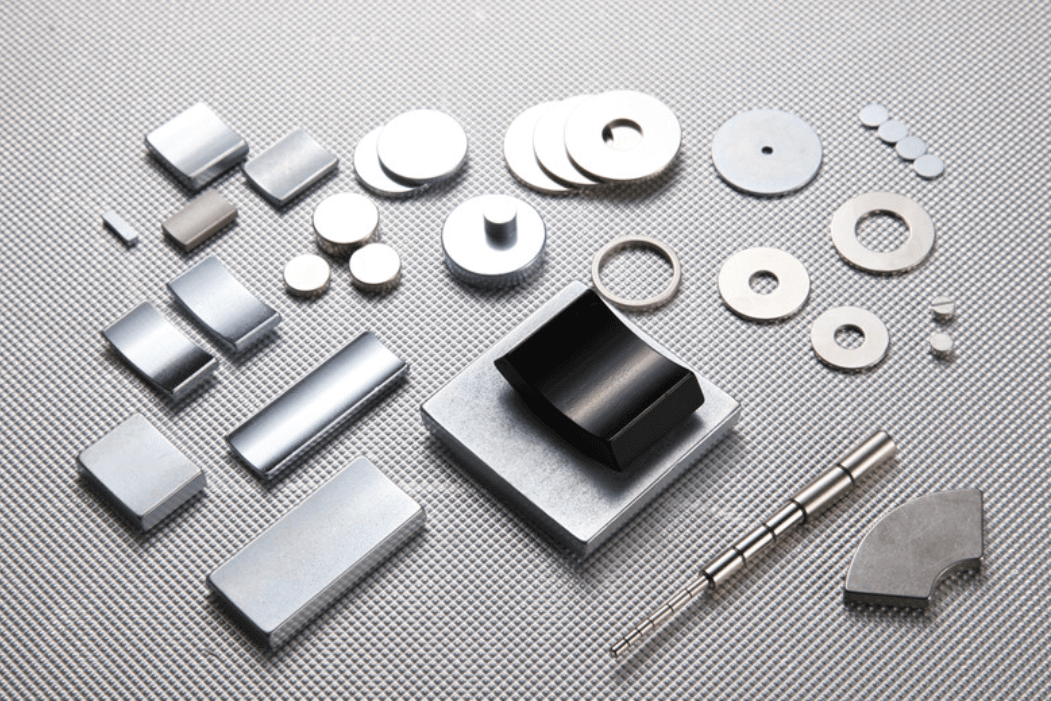
I group magnets into four main categories so you can pick the right one fast: permanent magnets, temporary (soft) magnets, electromagnets, and natural magnets. Below is a quick table that sums up each type, the key properties, and common US applications — useful when comparing permanent magnet materials like neodymium or high-temperature magnets like SmCo.
| Magnet Type | Short description | Key properties | Typical US applications |
|---|---|---|---|
| Permanent magnets (NdFeB, SmCo, Alnico, Ferrite) | Keep magnetism without power | High magnetic strength (NdFeB), high temp/corrosion resistance (SmCo), good stability (Alnico), low cost (ferrite) | Electronics, motors, EVs, wind turbines, sensors, loudspeakers |
| Temporary magnets (soft iron) | Magnetize only in presence of a magnetic field | Easy to magnetize/demagnetize, low coercivity | Switches, simple lifting tools, relays |
| Electromagnets | Created by current through coils around a core | Controllable field strength, needs power, scalable force | Industrial cranes, MRI, electric motors, lifting systems |
| Natural magnets (lodestone) | Naturally magnetized minerals | Weak, rare, mainly historical or educational use | Teaching, demonstrations, collectors |
Quick notes
- If you need a deep-dive on materials and options I recommend our magnets materials page for sourcing and technical details: https://nbaem.com/magnets-materials/
- For projects that face heat or corrosive environments, check specific high temperature magnets information here: https://nbaem.com/high-temperature-magnets/
Types of magnets Detailed Analysis
I’ll walk through the main magnet families, what each one is best at, and how we source and supply them for U.S. customers.
Permanent Magnets quick definition
Permanent magnet materials keep a magnetic field without power. Key properties:
- High remanence (stays magnetized)
- High coercivity (resists demagnetization)
- Common in electronics, motors, sensors, and clean energy
Neodymium NdFeB magnets
- Composition and characteristics: made from neodymium, iron, and boron (NdFeB). They’re the strongest permanent magnet materials today.
- Strength and temperature: very high magnetic flux density; standard grades work up to ~80–100°C. High-temp grades and coatings improve performance to ~150°C.
- Industry uses: magnets for electronic devices, brushless motors, EV traction motors, wind turbines, and compact consumer electronics.
- NBAEM sourcing and supply notes: we supply multiple NdFeB grades, custom sizes, and anti-corrosion coatings (NiCuNi, epoxy). For U.S. buyers we manage export documentation and offer shorter lead times through stock programs.
Samarium Cobalt SmCo magnets
- Composition and advantages: rare-earth SmCo alloys. Lower initial strength than NdFeB but far better temperature stability and corrosion resistance.
- Typical uses: high-temperature magnets, aerospace, turbomachinery and harsh chemical environments where stability >150°C is required.
- Samarium cobalt magnets properties make them ideal when performance under heat and corrosion beats raw strength.
Alnico magnets
- Composition and context: aluminum, nickel, cobalt alloys. One of the oldest permanent magnet materials.
- Modern use: stable over wide temperature ranges, good at sensing and instrumentation, pickup coils, and certain aerospace/industrial sensors.
- Strength: lower coercivity—can be demagnetized if shocked—so used where stable field shape is needed more than compact power.
Ceramic Ferrite magnets
- Composition and benefits: made from iron oxide mixed with strontium or barium — cheap and corrosion resistant.
- Cost efficiency and manufacturing: low material cost, easy mass production (pressing and sintering).
- Common uses: loudspeakers, fridge magnets, motors, magnetic separators, and many household devices.
- Ferrite magnet advantages include low cost and good resistance to demagnetization and corrosion.
Temporary magnets
- What they are: soft iron and similar materials that become magnetic only when exposed to a field.
- Why temporary: low retentivity and coercivity — they lose magnetism quickly once the external field is removed.
- Typical uses: electromagnetic switches, relays, simple lifting tools, and starters where temporary magnetism is useful.
Electromagnets
- How they work: a coil of wire carries current and creates a magnetic field; a ferromagnetic core concentrates the field. Field strength varies with current and coil turns.
- Common industrial applications: motors, cranes, MRI machines, magnetic lifting systems, and industrial separators.
- Advantages vs permanent magnets:
- Pros: controllable field strength, on/off capability, adaptable field shape.
- Cons: need power, cooling in high-duty use, larger footprint for same force compared to rare-earth permanent magnets.
Quick comparison table
| Magnet Type | Relative Strength | Temp Tolerance | Corrosion Resistance | Typical Uses |
|---|---|---|---|---|
| NdFeB (Neodymium) | Very High | Low–Moderate (standard grades) | Needs coating | Electronics, EV motors, wind turbines |
| SmCo (Samarium Cobalt) | High | High (>150°C) | Good | Aerospace, high-temp sensors |
| Alnico | Moderate | Very High | Moderate | Sensors, instruments |
| Ferrite (Ceramic) | Low–Moderate | High | Excellent | Speakers, motors, household devices |
| Soft iron (Temporary) | Low (when unpowered) | Moderate | Good | Switches, relays, lifting tools |
| Electromagnet | Variable (with power) | Depends on design | Depends on core/coating | Cranes, MRI, industrial lifting |
If you need specific grades, coatings, or custom shapes for U.S. products, I can explain what works best for your temperature, strength, and longevity needs. We at NBAEM focus on reliable NdFeB and SmCo sourcing, ferrite volume supply, and custom solutions for American manufacturers.
Types of magnets comparison
I put together a quick chart to compare the common magnet types so you can spot differences in magnetic strength, flux, temperature tolerance, corrosion needs, cost, and typical US applications.
| Magnet type | Relative magnetic strength (flux density) | Typical max operating temp | rosion resistance and coating | Cost | Common applications |
|---|---|---|---|---|---|
| Neodymium NdFeB | Very high (0.9–1.4 T) | 80–150°C (high-temp grades to ~200°C) | Prone to corrosion — nickel, zinc, epoxy coatings common | Medium to high | Motors, drones, magnets for electronic devices, wind turbines sensors |
| Samarium Cobalt SmCo | High (0.7–1.1 T) | 250–300°C | Good intrinsic resistance — often uncoated | High (rare earth) | High-temperature motors, aerospace, downhole tools, military |
| Alnico | Medium (0.6–1.0 T) | 300–500°C | Moderate — canrode, often plated or painted | Medium | Sensors, gauges, instruments, pickups |
| Ceramic Ferrite | Low to medium (0.2–0.4 T) | ~250°C | Excellent corrosion resistance — usually no coating | Low (cost efficient) | Loudspeakers, AC motors fridge magnets, consumer devices |
| Soft iron temporary | Low (depends on field) | V (limited by core) | Will rust unless treated | Low | Switches, relays, simple lifting tools where temporary magnetism helps |
| Electromagnet | Variable (depends on coil and power) Depends on coil insulation class | Core may need protection; coils need insulation | Variable (depends on size and power) | Cranes, MRI, industrial lifting, solenoids, controllable motors |
Key takeaways I use when choosing a
- For compact high power choose NdFeB — best magnetic material for many motors and electronics but needs coating and careful thermal choice
- For high-temperature or corrosive US applications pick SmCo or Alnico — SmCo is top for aerospace and high-temp magnets.
- For low cost and good corrosion resistance go with ferrite — great for speakers and mass-market parts.
- Use electromagnets when you need controllability and on/off power, but plan for power cooling.
- If buying from industrial magnet suppliers China or sourcing custom magnetic solutions, confirm grade, coating, and lead time up front.
This snapshot should you match strength, temperature, corrosion resistance, and cost to your specific application.
Factors to Consider When Choosing a Magnet Types of magnets
When you pick a magnet, think practical first. I break choices down into clear factors so you get the right permanent magnet materials or electromagnet for the job.
Application demands
- Strength and field shape – Do you need high force in a tiny spot (neodymium magnet uses) or a wide uniform field (ferrite magnet advantages)?
- Size and space – Small electronics use compact NdFeB or custom magnets for electronic devices. Heavy lifting favors larger permanent magnets or electromagnets.
- Duty cycle – Continuous use (motors, generators) prefers stable materials; occasional use can accept cheaper options.
Temperature and environment
- Operating temperature – For high-temperature magnets choose samarium cobalt magnets properties or specialty Alnico. NdFeB is strong but can lose strength with heat.
- Corrosion and humidity – NdFeB often needs coatings; ferrite and SmCo are more corrosion resistant. Think chemical exposure if you’re in coastal or industrial environments.
- Outdoor and harsh use – Use high-temperature magnets or coated magnets designed for long-term stability.
Cost availability and lead time
- Material cost – NdFeB is performance-heavy but more expensive than ferrite. SmCo costs more but excels at high temp.
- Supply chain – Rare earth pricing and lead times can change fast. As industrial magnet suppliers China, we track availability and offer alternatives to keep projects on schedule.
- Order size and inventory – Small runs or custom shapes can increase lead time. Ask about MOQ and stocking programs.
Supplier reliability and customization support
- Quality control – Look for material testing, magnetic performance reports, and certifications. We provide sample testing and batch traceability.
- Customization options – Tooling, coatings, bonded shapes, and assemblies matter for magnets for electronic devices or custom magnetic solutions.
- Technical support and logistics – Get help matching magnet type to application (magnetic material comparison). We offer design input, prototyping, and U.S.-friendly shipping options.
How we help you choose
- Quick guidance on which Types of magnets fit your need: NdFeB for power density, SmCo for heat and corrosion, ferrite for low cost, Alnico for sensors, electromagnets for controllable force.
- Testing, certifications, and custom solutions backed by our China-based production and U.S. logistics support.
- Clear lead time estimates, cost breakdowns, and recommendations for durable coatings or substitutes when rare earth availability is tight.
Types of magnets technology and material trends
I follow the magnet market closely for U.S. buyers, and three clear trends are shaping the future of permanent magnet materials and electromagnets.
Advances in rare earth magnets and alloy development
- Higher performance NdFeB and SmCo grades: manufacturers are boosting energy product (BHmax) and coercivity so magnets hold up better in motors and electronics.
- New alloy tricks: grain boundary diffusion, optimized rare-earth mixes, and bonded formulations improve strength while reducing heavy rare earth use.
- Applications: better permanent magnet materials help electric vehicle motors, wind turbines, and compact electronics. See more on neodymium magnets for common uses.
Sustainable sourcing and recycled magnetic materials
- Recycling is growing fast: magnets are being recovered from hard drives, motors, and e-waste to cut reliance on new rare earths.
- Lower carbon footprint: recycled NdFeB and bonded magnets can meet many industrial needs at lower environmental cost.
- U.S. buyers should ask suppliers about recycled content and traceability when sourcing magnets.
Supply chain impacts and China role in production and pricing
- China still dominates rare earth processing and magnet manufacturing, which drives global pricing and lead times.
- For U.S. customers that means planning: longer lead times, multi-sourcing, and inventory buffers help avoid production delays.
- Some buyers are shifting to alternative magnet types or higher-temperature grades to reduce the need for scarce elements. Learn more about high temperature magnets.
What this means for you
- If you need high strength at lower cost, modern NdB grades are the go-to choice.
- For high-temperature or corrosive environments, SmCo and specialized high-temperature magnets are better fits.
- Ask suppliers about recycled material options, lead times, and quality control so you can balance cost, performance, and supply risk.
Why Choose NBAEM for Your Magnet Material Needs and Types of Magnets
We are NBAEM (a Chinese magnetic material supplier) serving U.S. customers with a full range of magnet types of magnets — NdFeB, SmCo, Alnico, ferrite, soft iron temporary magnets, and electromagnets. We focus on reliable supply, clear specs, and practical support so your product development and production run smoothly.
Quality and certifications
- ISO 9001 certified quality system and routine batch traceability.
- RoHS and REACH compliance for parts used in U.S. electronics and appliances.
- Full testing: flux density (Gauss/Tesla), coercivity, demagnetization curves, temperature stability, salt spray and coating adhesion.
- Third-party lab reports available on request for critical projects.
Customization tooling and design support
- Custom magnetic solutions: custom grades, magnetization patterns, complex shapes, bonded and sintered options.
- CAD and prototyping support, sample runs, and tooling for serial production.
- Assembly and magnet balancing for rotors, speakers, and sensing modules.
- Help choosing between permanent magnet materials and electromagnet solutions based on cost, strength, and temperature needs.
Production supply and logistics
- Large production capacity with flexible MOQ for prototyping and scaled orders.
- US-focused shipping options, customs experience, and optional warehousing to cut lead time.
- Consistent packaging and labeling to meet U.S. import and retailer requirements.
- Competitive pricing on permanent magnet materials and ferrite magnet advantages thanks to in-house processing.
Technical support and after sales
- Application engineering to match magnet grade to need: neodymium magnet uses for high strength, samarium cobalt magnets properties for high-temp/corrosive environments, ferrite for cost-effective motors, and electromagnet applications for controllability.
- Magnetic material comparison help to weigh strength, temperature tolerance, corrosion resistance, and cost.
- Rapid troubleshooting, replacement parts, and lifetime testing data on request.
Real examples and customer outcomes
- Consumer electronics: supplied NdFeB assemblies that reduced size and raised magnetic flux density for stronger speakers.
- Aerospace sensors: delivered SmCo magnets for stable performance above 200°C.
- Industrial motors: provided ferrite and bonded magnets to cut costs while keeping torque requirements.
- U.S. OEMs benefit from clear QC records, custom tooling, and predictable lead times.
Services at a glance
| Service | Benefit |
|---|---|
| Full magnet types inventory | Fast samples and quick turn prototypes |
| Custom tooling & CAD | Right-fit magnets for devices and motors |
| Certified testing | Compliance and performance proof for U.S. buyers |
| Logistics and warehousing | Lower lead times and smoother customs |
Contact us and we’ll quickly match the right magnet type and grade to your project, share test reports, and provide pricing and lead times.

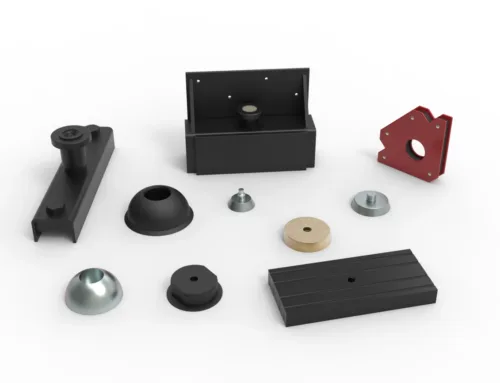
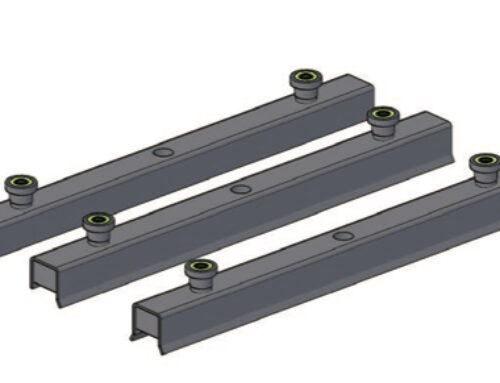
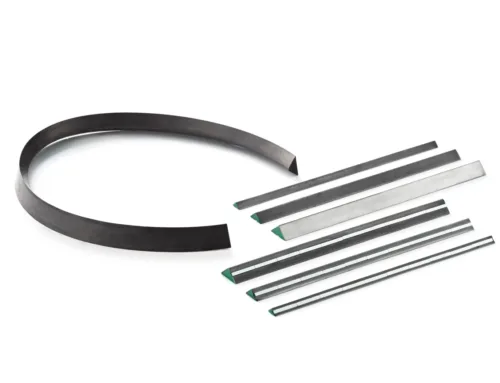
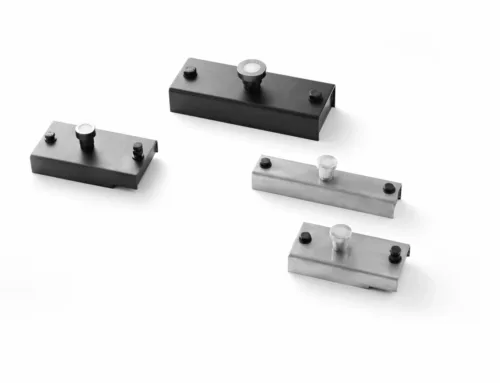
[…] For more detailed insight on magnet types and their effects under heat, consider exploring types of magnets. […]